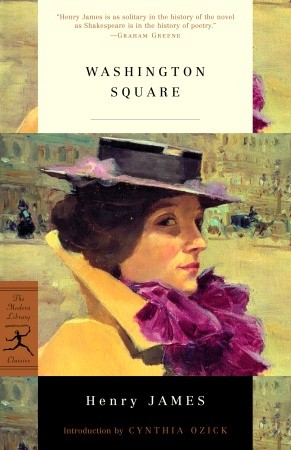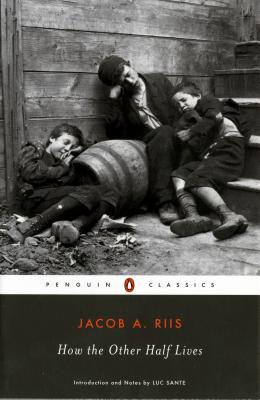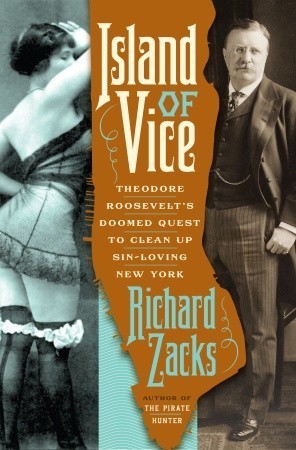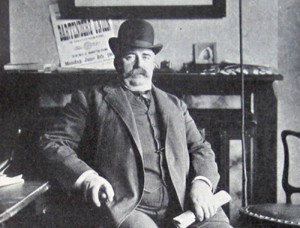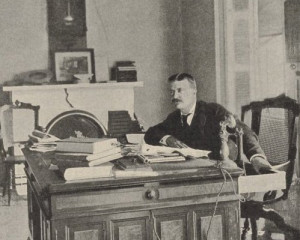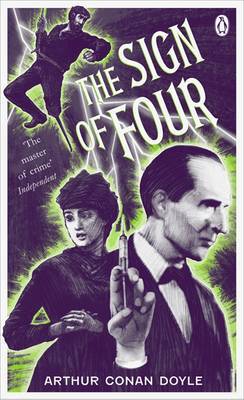We take a break from non-fiction, tenements, and vice this month to venture out of the slums and into the world of old New York gentility. When Caleb Carr was asked during last year’s New York Times web chat to name the key pieces of New York literature he has most admired, he included Henry James’ New York stories on his list, making particular mention of Washington Square which he described as, “one of the most punch-in-the-face stories about polite society ever written”. In consequence of this, we will be visiting the “decorous neighbourhood” of Washington Square—to borrow John Moore’s description of nearby Gramercy Park in The Alienist—this month in order to take a peek behind the respectable facade of Dr. Austin Sloper’s stately early nineteenth century home to examine the sometimes sad, sometimes cruel melodrama that took place within.
What’s it about?
Dr. Austin Sloper, a prominent New York physician, was fortunate to hold among his patients the cream of old New York society. At the age of twenty-seven, he added to his fortunes by marrying the love of his life: a “graceful”, “accomplished”, and “elegant” woman whom he saw as the “bright exception” to the other women of his acquaintance, and who brought to his household the added blessing of ten thousand dollars income. Tragically, misfortune struck only a few years into their happy union. First, Dr. Sloper lost his pride and joy, a three year old son, before he was forced to endure the greater loss of his wife as a result of childbirth two years later. The product of this tragic series of events was Dr. Sloper’s sole surviving heir, a daughter named Catherine, who would go on to become the unexpected heroine in this novel of manners and society.
Washington Square follows the story of the plain-faced, kindhearted, and dutiful Catherine as she traverses her perilous journey to independence. Faced with a charming, handsome suitor whose mercenary motives masquerade behind the facade of a devoted lover; a meddlesome aunt who masquerades as a reliable confidant; and a sharp, detached father who masquerades as a loving, devoted parent, Catherine must learn to see the key players in her life for who they really are if she is to make the right choice between her inheritance and her fiancé.
My thoughts
Even though Henry James would dismiss Washington Square as an “unhappy accident” later in his life, the novel is generally considered by modern audiences to be James’ most accessible work. However, within Washington Square’s simple form—we only follow one main plot within its approximately 250 pages—a social commentary is concealed that is far more complex than it first appears. Novelist Cynthia Ozick summarised the main themes of the novel succinctly in her Introduction to the 2002 Modern Library Classics edition:
Washington Square is a novel about the abuse of imagination, the abuse of trust, the abuse of propriety and form; about, above all, the absence of pity … Though it may be a bad thing to break the rules of a fixed society (disinheritance of a child is such a breach, jilting is such a breach), it is a worse thing to break a heart.
After my recent re-read of the novel for 17th Street, I found myself agreeing with Ms. Ozick; however, I am prepared to go further than Ms. Ozick to suggest that perhaps the theme that sits at the very heart of Washington Square is, in actual fact, that of betrayal. Not necessarily the betrayal that results from a meddlesome aunt manipulating her niece for her own interests, or even the betrayal produced by an opportunistic suitor (although neither of these parties is, in any way, innocent), but the ultimate betrayal—and consequent damage—produced by a father who was not only unable to love his daughter, but actively resented her, going so far as to claim that his only comfort in the loss of his wife was his “satisfaction in the thought that [she] had not lived to find [their daughter] out”. And what was Catherine’s crime? The brilliant doctor was disappointed that he had fathered a “commonplace” daughter. Within the first fifteen pages of the novel, Dr. Sloper’s feelings about his daughter, with her “plain, dull, gentle countenance”, are made brutally clear:
“When Catherine is about seventeen,” he said to himself, “Lavinia [Catherine’s aunt] will try and persuade her that some young man with a moustache is in love with her. It will be quite untrue; no young man, with a moustache or without, will ever be in love with Catherine.”
Although never outwardly cruel toward his daughter, it was Dr. Sloper’s fundamental inability to feel any genuine love or affection toward Catherine that ultimately resulted in his daughter falling victim to the opportunistic overtures of the mercenary suitor Morris Townsend, much to the doctor’s vexation. It was the illusion of love, after all, that comprised the entire attraction Morris held for Catherine, as Ms. Ozick explains in her Introduction to the novel:
Morris is a work of art; he is also an artist. Like a painter or a novelist, he can create a young woman who never before existed. He can transform Catherine, to whom no one has ever shown honest affection, into a woman who for the first time feels herself to be worthy of love.
Of course, the real tragedy of Washington Square is that Catherine is not unlovable. We learn of others in the story who can see Catherine’s virtues for what they really are; but Catherine, having been betrayed by the person she has always held most dear, is unable to see what fairer and unbiased members of society do plainly see.
So, what was it about Washington Square that might have prompted Caleb Carr to describe the novel as “one of the most punch-in-the-face stories about polite society ever written”? After all, the novel is mostly a family drama, and when it comes to “punch-in-the-face stories” about old New York society, one’s mind might first turn to an author like Edith Wharton instead.
Well, aside from the novel bringing the rules of the fixed society in which it was set sharply into focus, perhaps it might also relate to the aforementioned theme, at least in part. Nothing is quite so damaging, so heartbreaking, or so cruel as a parent’s betrayal of their child; a theme that is also at the very heart of the Alienist books. As Washington Square amply demonstrates, betrayal is not a cruelty reserved for the poor, the slums, or even the middle class. It hides behind the stately, respectable facades of neighbourhoods like Washington Square just as readily as it does the tenements of the Lower East Side, and its damage is just as great.
A “punch-in-the-face” story about polite society, indeed.

